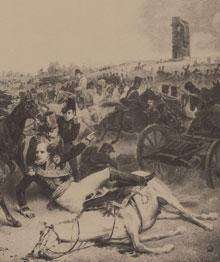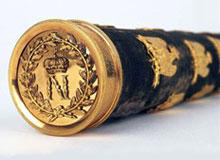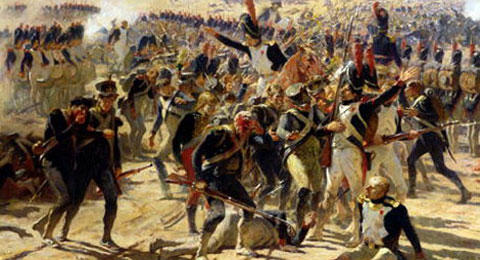

The Battle for Essling
We refer to the battle, which was fought on a sector of the same field of battle as Wagram two months later, as the battle of Aspern-Essling. However, it’s known by the Austrians as Aspern and by the French as Essling. The reason for this is that each of the opposing forces claimed some sort of victory and each named the battle after the sector of the battle in which they fared the best. The fact that Marshal Masséna was rewarded for his skill in leading the attacks on the village of Aspern by being honoured as Prince d’Essling speaks volumes. Luckily, Marshal Lannes who did actually lead the attacks on Essling was out of the picture by the time honours were handed out. However, my own reference to Essling refers rather to the sector of the battlefield I decided to concentrate on and begin by wargaming as a battle in itself.A Wargamer's Knapsack
Any wargamer carrying a replica marshal’s baton in his knapsack when he begins a new project has got to start small and aim big. I decided to focus my project around a specific 1809 battle. It could have been a Peninsular War battle but Pendraken’s 10mm 1809 range is clearly based on the Danube Campaign so it made sense to go with the figure range – but with slight trepidation because this theatre of war is well known for the largest armies the world had ever seen. So with the French and Austrian protagonists decided upon I first thought I could focus on a sector of the battle of Wagram – the campaign’s star event. However, I settled rather on Aspern-Essling as my chosen battle. Aspern-Essling fitted the bill for a number of reasons. It had the drama, the personalities, some interesting and important terrain features, and (huzzah!) most of Napoleon’s Imperial Guard actually in the thick of it! And the potential for the full battle to be fought – without me having to purchase a bigger wargames table!


Baton of Marshal Davout, Paris Army Museum





































































































POST 02
02












